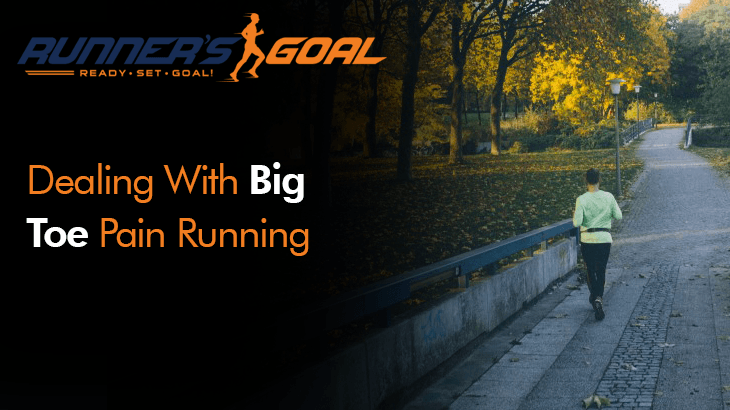In your pursuit of the famed runner’s high, you’ll probably experience a few lows, like aches and pains. If you get big toe pain running, here is what’s happening in your foot.
Big Toe Pain Can Cause a Big Disruption
If you suffer from big toe pain from running, you might feel like you should be able to tough it out. Maybe you’ve continued your runs despite all the other aches and pains running has brought you over the years, and you think this shouldn’t be any different than running through plantar fasciitis or knee problems.
It might be different though. While big toe pain might not seem like a huge problem, it can be a game changer for you.
Your big toe is no ordinary toe. It carries much more weight than your other toes do.
What Is Wrong with My Toe?
If you are feeling pain in your big toe because of your runs, it could be a problem with a sesamoid, one of the two small bones which are located under your big toe joint. You may have a soft tissue injury in that area, a fracture, or an overuse injury.
Sesamoid issues demand respect — they can sideline you from running for weeks, months and even years. In severe cases, they can end your running career.
So if you are experiencing consistent pain in your big toe area, you should take it seriously. Take a few days off of running and see if you feel any better when you return.
If you don’t feel better, or the pain returns after a few runs, it’s time to consult a doctor. If you let the problem snowball, you’re gambling with your future as a runner.
Reconsider Your Shoe Size
Sometimes big toe pain isn’t related to sesamoid issues, and it can be the result of a much simpler problem.
Check your shoe size. If you are running with shoes that are too small, you could be creating big toe pain that will be easier to resolve.
When buying running shoes, you shouldn’t purchase ones that are the same size as the ordinary shoes you wear for everyday use. They need to be bigger than that.
Many runners order one size bigger than their regular shoes to ensure that they are roomy enough to avoid toe cramping and swollen feet.
You should also replace your running shoes often. Some people like to replace them every six months, while others recommend getting new ones every 300 to 400 miles.
Running doesn’t require much equipment so don’t ignore the only real tool you need — your shoes.
As a runner, you can tell when your shoes are starting to feel worn out. If you notice you seem to have less spring in your step and more aches, it’s time to replace them.
Toeing the Line with Your Runs
The bottom line is this: Your feet are a key element when it comes to running. You need to take care of them.
If you feel pain and it doesn’t go away, the next run you take should be into your doctor’s office for an evaluation.


Comments are closed.